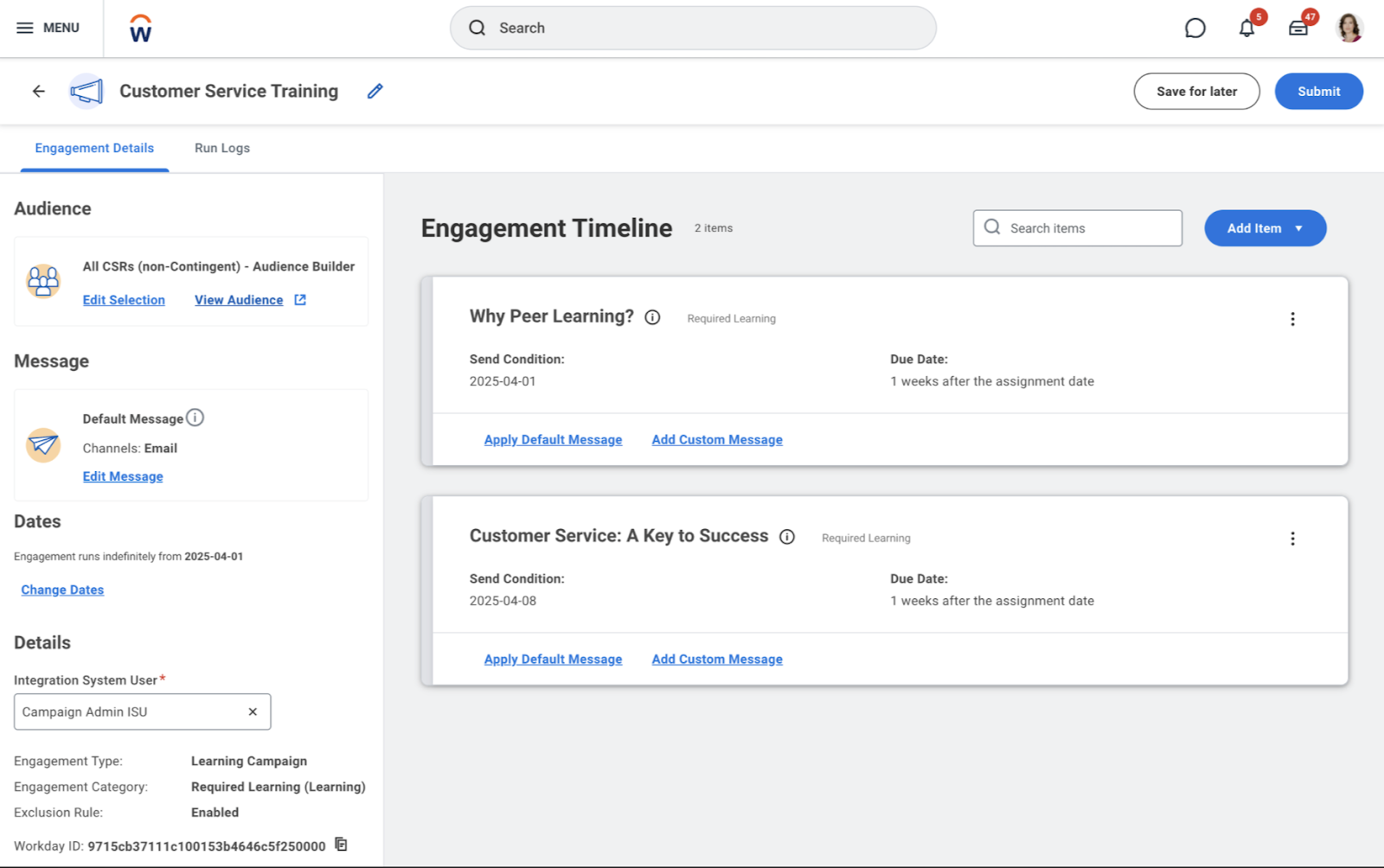Get Workday
.svg)
Workday is a human capital management (HCM) platform built for large organizations with global operations. It unifies core HR, payroll, talent, learning, compensation, and analytics into one system with a design tailored for scale, configurability, and compliance across different countries. Workday is built for complexity: multi-entity companies, cross-border payroll, global regulations, and deep integration with finance.
.svg)
Strengths
Comprehensive “hire-to-retire” HCM suite spanning HR, payroll, benefits, recruiting, learning, and more
Native global payroll support in key markets (U.S., U.K., Canada, France) and robust partner integrations elsewhere
Ultra-configurable: custom rules, approval chains, org modeling, business process framework
Real-time analytics and unified reporting across HR, finance, and operations
Enterprise-grade security, compliance, audit trails, and data controls
Mobile-first design: employees and managers can perform most tasks from mobile apps

Limitations
High cost and significant implementation effort (often 6–12 months or more)
Requires strong internal resources or consultants for deployment
Some modules (especially global payroll in less common jurisdictions) rely on partners
Interface has a learning curve; complexity may overwhelm smaller teams
What is Workday?
Workday is a cloud-based suite designed to replace multiple legacy systems. It’s for organizations that want one system of record for HR, payroll, learning, and talent across all their global operations.
Companies use Workday to:
Store employee master data, roles, job history, and org structure
Automate recruiting and onboarding workflows
Run multi-country payroll and compensation cycles
Manage benefits, learning, performance, and succession planning
Forecast headcount, budget across regions, and analyze workforce metrics
Key Workday Features and Functions
Core HR & Workforce Directory
Workday’s biggest strength is its unified platform, combining core HR (personnel records, org charts, workflows) with global payroll, performance management, and recruiting. It tracks every job, position, and organization across multiple hierarchies, while maintaining org chart and headcount reports automatically.

Recruiting & Onboarding
It has integrated ATS (job requisitions, candidate tracking, interviews, offers) with onboarding workflows that feed into the full employee lifecycle. Workday includes collaborative hiring workflows that can replace separate ATS tools.

Payroll & Compensation
Built-in payroll for key markets (U.S., U.K., Canada, and France) while offering integrations elsewhere. Supports complex compensation models (jobs, grades, cost of living adjustments) and automated pay calculations. The platform also manages benefits eligibility and bonus/stock plan administration. Each change you make to HR records (like a new hire or salary change) automatically flows into benefits.

Learning & Career Development
The platform offers learning management tools (courses, certifications) and career pathing. Workday tracks employees' skills and offers internal mobility tools, helping employees to grow within an organization.

Talent & Performance Management
Workday contains modules for goal alignment, 360-degree feedback, review cycles, succession planning, and talent bench planning. It ties career development goals to skills and provides managers with talent readiness.

Workforce Planning & Analytics
The platform offers tools (forecasting, scenario modeling, and cost projections) with rich analytics. Built-in reports cover recruitment metrics (turnover, headcount, and compensation trends), payroll costs, and productivity. It allows managers to use cross-functional analyses, e.g, linking learning outcomes to performance metrics.

Pricing and Plans
Pricing is custom per organization, usually per-employee per-month (PEPM). Industry estimates place it in $30–$40+ PEPM range, with significant implementation costs (often equal to the first year’s subscription) and professional services fees.
Conclusion & Recommendations
Workday is a powerhouse built for large, global organizations, eliminating data silos, which allows HR, finance, and operations to work in a unified system. It’s a good fit for companies with deep complexity and regional legal demands, multiple benefit schemes, and large headcounts. The cost, implementation effort, and requirements for strong internal support make it best suited to enterprises. Smaller companies or those in single-region settings may prefer lighter, quicker-to-deploy systems. But for organizations serious about scaling globally, Workday remains a top-tier choice.



.svg)





